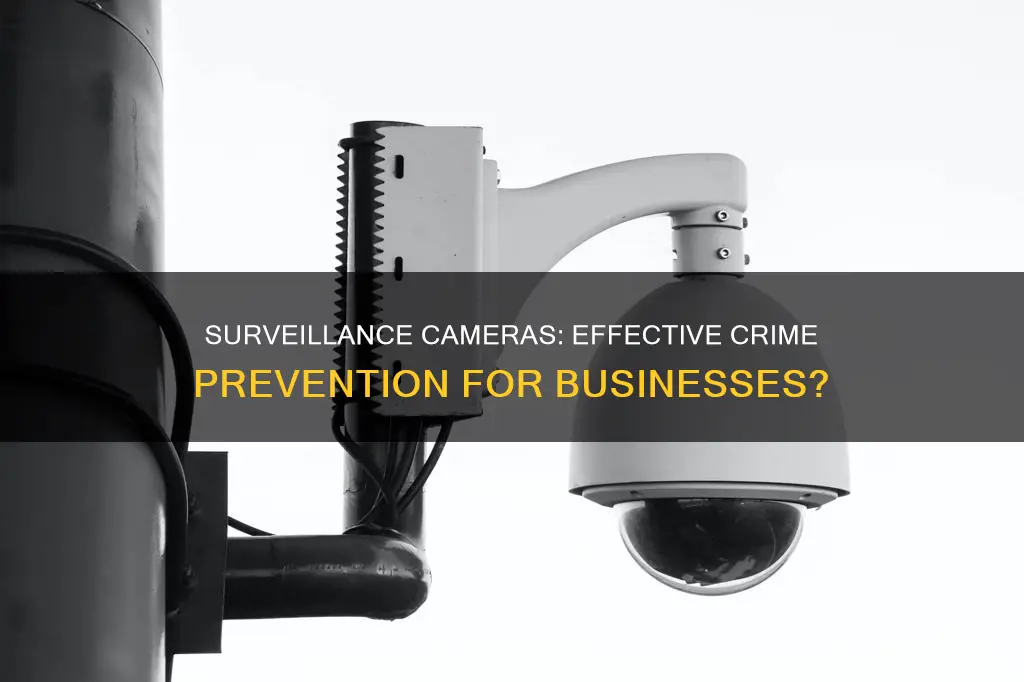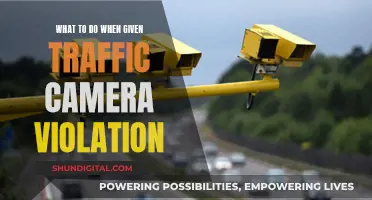
The effectiveness of surveillance cameras in crime prevention is a highly debated topic. While some argue that they are an invasion of privacy, others advocate for their ability to deter and solve crimes. Proponents of surveillance cameras highlight their success in high-profile investigations, such as the Boston Marathon bombing, where investigators identified suspects by sifting through footage captured by city cameras. In addition, studies have shown that security cameras can lead to a significant reduction in crime, with some cities experiencing a decrease in crime rates beyond the areas under camera coverage. On the other hand, critics point out that surveillance cameras are not a foolproof solution, as they can be tampered with or fail to capture incidents due to technical limitations. The placement and quality of cameras also play a crucial role in their effectiveness, with visible and high-quality cameras being more successful in deterring criminals. Ultimately, the debate surrounding the effectiveness of surveillance cameras in crime prevention for businesses is complex, with valid arguments on both sides.
| Characteristics | Values |
|---|---|
| Crime deterrence | Surveillance cameras act as a powerful deterrent, with their mere presence making potential criminals think twice. |
| Crime reduction | Surveillance cameras have been linked to reduced crime rates, as seen in Baltimore and Chicago, where cameras resulted in a significant drop in crime. |
| Cost-effectiveness | The cost savings associated with crimes averted through camera systems can outweigh the costs of implementing the technology. |
| Evidence collection | Cameras capture visual evidence that is crucial in court, helping identify and prosecute perpetrators. |
| Crime solving | Camera footage provides additional leads and aids in securing witness cooperation, complementing other forms of evidence. |
| Remote monitoring | Today's surveillance cameras offer remote access to live feeds and stored footage, enabling swift responses to suspicious activities. |
| AI integration | AI-supported cameras can recognize unusual behaviors and send instant alerts, enhancing the efficiency of monitoring. |
| Integration with other security measures | Surveillance cameras, when combined with other security measures like alarms, motion detectors, and access control systems, create a layered defense that enhances overall security. |
What You'll Learn
- Surveillance cameras act as a powerful deterrent, making potential criminals think twice
- Cameras can be integrated with other security systems, creating a layered defence
- Cameras provide visual evidence that can be used in court to identify perpetrators
- AI-supported cameras can recognise unusual behaviour and send instant alerts
- Surveillance cameras are cost-effective, saving cities money by reducing crime

Surveillance cameras act as a powerful deterrent, making potential criminals think twice
Surveillance cameras are a powerful tool in the fight against crime, and their presence can act as a strong deterrent to potential criminals. The mere sight of a security camera can make would-be offenders think twice before acting, as they know they are being watched and that their actions will be recorded. This psychological impact cannot be overstated and often leads to significant behavioural changes in potential wrongdoers.
Research has shown that homes with security cameras are 300% safer from break-ins than those without. A study in Orange County, New Jersey, found that installing cameras around the city led to a 50% drop in all types of crime. Similarly, a study by the University of North Carolina in Charlotte found that 60% of burglars would move on to another target if they saw security cameras on the property. These findings are supported by interviews with inmates serving time for burglary, who stated that the presence of security cameras would cause them to leave immediately.
The effectiveness of surveillance cameras as a deterrent is further enhanced when they are paired with other security measures such as alarms, motion sensors, and access control systems. For example, integrating cameras with motion detectors can trigger the camera to focus on a specific area of interest and capture detailed footage. This multi-layered approach creates a robust defence that significantly improves the overall security of a premises.
In addition to their deterrent effect, surveillance cameras also play a crucial role in crime solving and prosecution. High-resolution cameras can capture actionable evidence, helping prosecutors secure convictions and reducing the likelihood of reoffending. The successful use of camera technology in high-profile investigations, such as the Boston Marathon bombing, has highlighted the importance of surveillance cameras in ensuring public safety.
While there may be concerns about privacy and the potential for abuse, the responsible implementation and use of surveillance cameras can coexist with civil liberties. Guidelines and policies should be put in place to address privacy issues, such as avoiding inappropriate views of private areas and documenting and publicising the use of surveillance camera footage.
Overall, surveillance cameras are a valuable tool in preventing and solving crimes. Their presence can deter potential criminals, and their ability to capture evidence makes them a powerful ally for law enforcement and prosecutors.
Fight Traffic Camera Tickets: Your Options and Rights
You may want to see also

Cameras can be integrated with other security systems, creating a layered defence
Surveillance cameras are an effective way to prevent and solve crimes for businesses. They act as a powerful deterrent, with their mere presence making potential criminals think twice about their actions. This is particularly true for businesses, which are four times more likely to be robbed than private homes.
However, cameras can also be integrated with other security systems to create a layered defence that significantly improves overall security. For example, a camera system can be integrated with motion detectors and alarms. When a motion detector senses unusual activity, it may trigger the camera to focus on a specific area to capture detailed footage. Similarly, integrating cameras with access control systems enhances door or entry point security. In this scenario, if an unauthorised person attempts to enter a restricted area, the access control system can immediately alert security personnel while the cameras track and record the individual's movements, providing real-time data for an effective security response.
In addition, many cameras are now equipped with AI capabilities, allowing them to recognise suspicious or unusual activities and send instant alerts to the relevant people or authorities. This further enhances the effectiveness of surveillance cameras in preventing crimes and ensuring a swift response in emergency situations.
The successful integration of surveillance cameras with other security systems depends on several factors, including trained staff to monitor the systems and enough cameras to detect crimes in progress. Furthermore, the use of cameras should not be seen as a replacement for traditional police work but rather as a complementary tool that provides additional leads and aids in securing witness cooperation.
Mastering Park Camera Mode: Understanding the Boxes
You may want to see also

Cameras provide visual evidence that can be used in court to identify perpetrators
Surveillance cameras are a valuable tool in the fight against crime, and their effectiveness is evident in several ways. One of their most significant advantages is their ability to provide visual evidence that can assist in identifying perpetrators and bringing them to justice.
High-resolution cameras installed by businesses can capture clear and detailed images or videos of criminal activities, which can then be used in court proceedings. This visual evidence is crucial in identifying suspects and building a strong legal case against them. It aids judges and juries in making informed decisions and helps ensure that justice is served.
The impact of surveillance cameras on legal proceedings is significant. They provide an unbiased account of events, helping prosecutors secure convictions and ensuring that criminals are held accountable for their actions. This was evident in the Boston Marathon bombing case, where investigators used video footage from city cameras to identify the suspects.
The presence of surveillance cameras also acts as a deterrent to potential criminals. They are aware that their actions may be recorded and used as evidence against them, which can lead them to reconsider their actions. This was supported by a study from the University of North Carolina, where 60% of surveyed burglars stated that they would move on to another target if they noticed security cameras or alarm systems.
Additionally, the integration of surveillance cameras with other security measures, such as motion detectors and alarms, further enhances their effectiveness. For example, when a motion detector senses unusual activity, it can trigger a camera to focus on a specific area, capturing detailed footage that can be crucial in identifying and apprehending suspects.
While surveillance cameras offer numerous benefits, it is essential to acknowledge that they are not a perfect solution. Technical failures, limited coverage, and challenges with night or bad weather conditions can impact their effectiveness. However, when used appropriately and in conjunction with other security measures, surveillance cameras can be a powerful tool in preventing and solving crimes, ultimately making our communities safer.
Lollipop Smart Baby Camera: Battery Included?
You may want to see also

AI-supported cameras can recognise unusual behaviour and send instant alerts
AI-supported cameras are an incredibly powerful tool in crime prevention. They are not just passive observers, but active players in the game of crime prevention. AI cameras can be programmed to recognise unusual behaviour and send instant alerts to you, your security team, or law enforcement. This means that businesses can act quickly to prevent crimes from happening.
AI cameras use advanced technologies to offer more intelligent, specific, and feature-rich capabilities compared to traditional CCTV systems. They can learn, adapt, and make decisions based on the data they collect. They can identify potential threats or anomalies more accurately than traditional security cameras.
AI cameras can be programmed to detect unusual or suspicious behaviour through video analytics. This technology helps in recognising unusual or suspicious behaviours, enabling quicker and more accurate responses to potential threats. For example, if an unauthorised person attempts to enter a restricted area, the AI camera can immediately send an alert to security personnel.
The use of AI in security cameras is a significant step forward in business technology. AI cameras provide an extra level of security and help to streamline operational procedures. They can be integrated with other security systems, such as motion detectors, alarms, and access control systems, to create a comprehensive and automated security setup.
AI-supported cameras can also provide valuable evidence in legal proceedings. High-quality footage from these cameras can help identify perpetrators and support legal cases against them. This makes it more likely that criminals will be apprehended and pulled off the streets.
Focusing Your Camera: Kindle Fire Tips and Tricks
You may want to see also

Surveillance cameras are cost-effective, saving cities money by reducing crime
Surveillance cameras are an increasingly popular method of crime prevention, with many cities and private businesses adopting the technology. The evidence suggests that they are a cost-effective solution, saving money by reducing crime and associated costs.
The effectiveness of surveillance cameras in preventing crime is well documented. In Baltimore, for example, the installation of 500 cameras led to a significant reduction in crime, with 30 fewer incidents per month on average. Chicago's use of surveillance cameras yielded similar results, with over 8,000 cameras installed across the city, leading to an almost 12% reduction in crime. This resulted in a cost saving of over four dollars for every dollar spent on the technology.
In addition to Baltimore and Chicago, a study in Orange County, New Jersey, showed a 50% drop in all types of crime after the introduction of surveillance cameras. The police officers involved in the study noted that the cameras made it much easier to investigate cases and apprehend offenders.
The University of North Carolina in Charlotte conducted a study that supports the idea that surveillance cameras deter crime. The study surveyed 422 imprisoned burglars, and 60% of them said they would look for an alarm system and move on to another target if they found one. This indicates that the presence of security measures, including cameras, is an effective deterrent.
The use of surveillance cameras can also aid in legal proceedings. High-quality footage can help identify perpetrators and provide key evidence to support legal cases, helping to ensure that criminals are locked up and unable to target other businesses or homes.
While there are some concerns about the invasion of privacy and the potential for abuse, the cost-effectiveness of surveillance cameras in reducing crime is clear. They provide a powerful deterrent, improve the ability to investigate crimes, and aid in the prosecution of offenders.
Unlocking RAW Potential: Unconventional Uses for Your Camera
You may want to see also
Frequently asked questions
Yes, surveillance cameras are effective in deterring crime. The presence of cameras can make potential criminals think twice about committing a crime. In addition, cameras can provide valuable evidence that can help identify and prosecute offenders.
Surveillance cameras can help prevent crime by acting as a powerful deterrent. The mere presence of cameras can change the behaviour of potential wrongdoers, making them less likely to commit a crime. Cameras can also provide real-time monitoring, allowing businesses to spot and respond to suspicious activities quickly.
Yes, surveillance cameras are a worthwhile investment for businesses. They can help protect the business from robbery and other crimes. In addition, cameras can also improve the overall security of the business premises and enhance the safety of customers and employees.
While surveillance cameras are effective in deterring and preventing crime, they have some limitations. For example, cameras may not always function correctly due to technical failures or adverse weather conditions, which can impact their effectiveness. In addition, cameras may not always capture events in their entirety or provide clear footage, especially at night or in low-light conditions.







